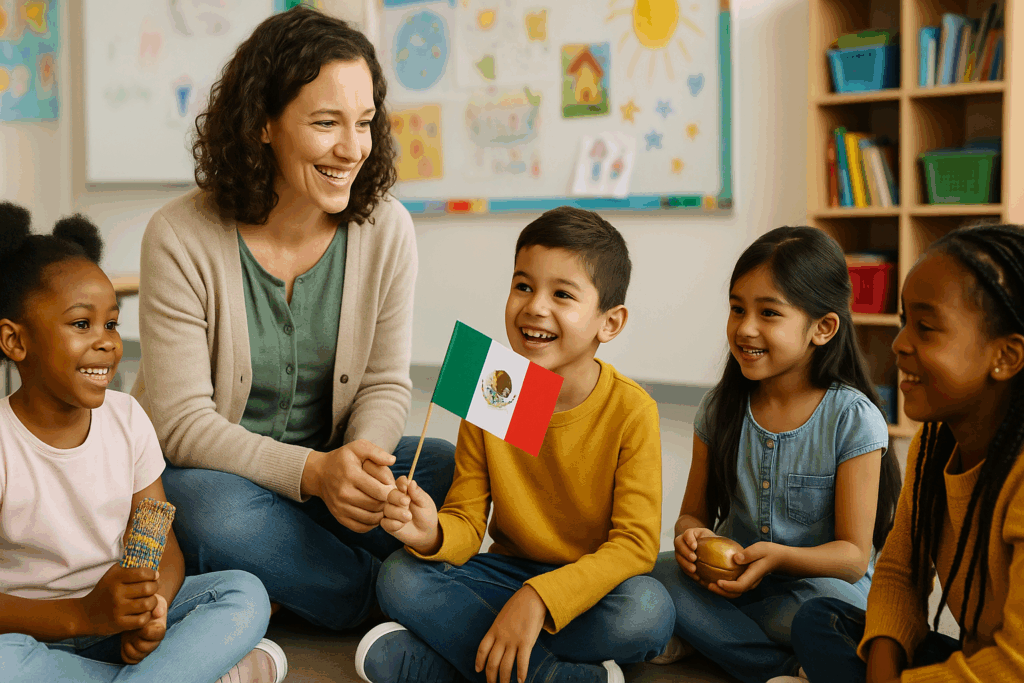With thousands of qualified teachers competing for the best positions, your teaching skills won’t get put to use if schools can’t find you. They need to see what makes you special and believe you can handle today’s classroom challenges, i.e. soft skills.
Teacher soft skills aren’t only important for building a sound classroom presence. They also help student engagement and professional reputation. The goal is to create a skill set that makes you a reliable educator in your school and community.
In this guide, we’ll explain essential soft skills for modern teachers. You’ll see why these teaching skills are necessary and learn techniques to boost your classroom success and career growth.
Read on to learn about the abilities that will distinguish you in the demanding education field.
Essential Teacher Soft Skills That Boost Your Classroom Success
Subject knowledge alone won’t make you shine in the modern education industry. However, the three teacher soft skills below separate good educators from great ones in modern classrooms.

Let’s explore what effective teachers do differently:
Communication Skills That Connect With Every Student
Great teachers don’t just talk to students. They listen first, then adapt their message to what each child needs. This behaviour indicates using simple language to explain complex ideas and knowing if your message really got through.
Emotional Intelligence in Action
You’ll face meltdowns, frustrated parents, and your own bad days. How you respond in these moments defines your success.
It’s very obvious that teachers with high emotional intelligence stay calm, read the room, and respond thoughtfully instead of reacting. Based on our observation, we can assure you that this single ability prevents most classroom drama.
Adapting When Technology Fails
Technology crashes, students arrive upset, or the admin changes your schedule at the last minute. When this happens, adaptable modern teachers don’t panic or stick rigidly to lesson plans. They look for creative solutions and keep their students engaged, no matter what curveballs come their way.
Now let’s explore how cultural awareness fits into this mix.
Building Cultural Awareness Without the Guesswork
Look at any classroom today. You’ll see kids from many different places and families. Don’t worry, though, you don’t need to know every custom or walk on eggshells around differences.

Try these three straightforward approaches:
- Start with curiosity, not assumptions: Ask students about their experiences rather than guessing what they might need. A simple “Tell me about how you celebrate holidays at home” opens doors better than any textbook. This approach helps you understand each child as an individual, not as a stereotype.
- Weave different perspectives into everyday lessons: When discussing families, include various family structures your students might recognise. Early childhood education settings particularly benefit from this inclusive teaching approach, as young children are actively forming their worldview.
- Give students opportunities to be cultural teachers: Let children teach each other about their traditions, foods, or languages during appropriate moments. It’s because peer teaching creates authentic learning moments where all students benefit from diverse perspectives and experiences. You can find more guidance here.
Once you get comfortable with these basics, cultural responsiveness just flows naturally into your teaching. Speaking of flow, let’s discuss how to handle those curveball moments every teacher faces.
Practical Problem-Solving Techniques for Everyday Teaching Challenges
Every teacher faces moments where lesson plans fall apart and students act up. The good news is that effective problem-solving follows a clear pattern.

Here’s your three-step approach to tackle any classroom challenge:
Stop and assess the situation
Don’t react immediately to disruptions or unexpected changes. Take a breath and figure out what’s really happening. Is the student having a bad day, or is your lesson plan too advanced? Think of the answer in the meantime. This pause helps you respond thoughtfully instead of just reacting.
Make one targeted adjustment
You might be tempted to change everything at the same time, but this creates more confusion. You should adjust your teaching method, move a student’s seat, or simplify instructions instead. One focused change often fixes multiple issues without overwhelming anyone.
Document what works for future use
As soon as you’ve solved the problem, make a mental note or write down what worked. Maybe switching to visual aids helped, or perhaps speaking more slowly improved understanding.
Consider Sarah, who teaches early childhood education. Her five-year-olds were struggling with a math concept until she introduced counting blocks instead of worksheets. The hands-on method fixed the issue immediately.
Your Next Steps as a Skilled Educator
Modern teachers face increasing demands with diverse classrooms and changing student needs. Technical knowledge alone won’t secure the best teaching positions or create engaging learning environments. Fortunately, developing the right soft skills can distinguish you from other educators.
We’ve explored essential communication skills, emotional intelligence, cultural responsiveness, and practical problem-solving techniques. Each ability helps you connect with students, manage classroom challenges, and build your professional reputation in today’s education sector.
Ready to advance your teaching career? Mind Leap Tech offers specialised training programmes and connects skilled educators with top schools across New Zealand and internationally.
